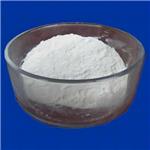glucagon-like peptide 1 manufacturers
- Glucagon-like peptide 1
-

- $95.00 / 1kg
-
2024-01-02
- CAS:89750-14-1
- Min. Order: 10kg
- Purity: 0.99
- Supply Ability: 20tons
|
| | glucagon-like peptide 1 Chemical Properties |
| Sequence | H-His-Ala-Glu-Gly-Thr-Phe-Thr-Ser-Asp-Val-Ser-Ser-Tyr-Leu-Glu-Gly-Gln-Ala-Ala-Lys-Glu-Phe-Ile-Ala-Trp-Leu-Val-Lys-Gly-Arg-NH2 |
| | glucagon-like peptide 1 Usage And Synthesis |
| Structure | GLP-1 is a 31-aa peptide hormone and is secreted from
intestinal endocrine L cells in two major molecular forms,
GLP-1(7–37) and GLP-1(7–36)-amide. Amidation is not always important for its biological activity,
and these two molecular forms have similar biological
activities. The majority of circulating GLP-1 is found to
be GLP-1(7–36) amide, with lesser amounts of GLP-1
(7–37). GLP-1 shares a highly conserved alanine at position 9 with GIP and GLP-2, making these peptides ideal
substrates for dipeptidyl peptidase 4 (DPP-4). | | Gene, mRNA, and precursor | The human proglucagon gene, GCG, location 2q36–
q37, spans approximately 9.4 kb and comprises six exons
and five introns. It encodes a preproglucagon of 180 aa
residues that contains glucagon, GLP-1, and GLP-2. The expression of proglucagon has been reported in
pancreatic α cells, intestinal L cells, and the brain. | | Synthesis and release | Glucagon, GLP-1, and GLP-2 are processed from proglucagon in pancreatic α cells and intestinal L cells in a
tissue-specific manner. Prohormone convertases (PCs)
are responsible for the tissue-specific processing. Glucagon is liberated from pancreatic α cells by PC2, wherea GLP-1 and GLP-2 are liberated from the intestinal L cells
by PC1/3. As a result, GLP-1 and GLP-2 are coreleased in
a 1:1 ratio following nutrient ingestion. The secretion of
GLP-1 is stimulated by nutrients such as lipids and carbohydrates. In addition, several hormones such as cholecystokinin (CCK), GIP, and somatostatin as well as
numerous neuromediators regulate GLP-1 secretion. Insulin has been reported to inhibit GLP-1 release, indicating a feedback regulation of GLP-1 secretion. | | Receptors | The receptor of GLP-1 (GLP1R) is a seventransmembrane GPCR that belongs to a subclass of the
family B. The GLP-1 receptor was first identified by
ligand binding experiments and measurements of cyclic
AMP accumulation using the rat insulinoma cell line. The human GLP-1 receptor gene, GLP1R, is located on
chromosome 6 (6p21). The GLP-1 receptor contains a
large hydrophilic extracellular domain and seven hydro�phobic transmembrane domains. In addition, the GLP-1
receptor has three potential N-linked glycosylation sites,
and glycosylation may modulate the receptor function. | | Agonists | Exendin-4 (subsequently renamed exenatide, the first
FDA approved “incretin mimetic”), Liraglutide (a longacting DPP-4-resistant GLP-1 receptor agonist), CJC-1131 (a GLP-1 analog engineered for covalent coupling
to albumin), Albiglutide (originally referred to as albugon, a recombinant human albumin-GLP-1 protein),
ZP10 (an exendin-4 derivative), BIM51077 (subsequently
renamed taspoglutide), LY315902 (a DPP-4-resistant
GLP-1 analog), LY2428757 (a pegylated GLP-1),
LY2199265 (Dulaglutide, an Fc immunoglobulin fusion
protein), Semaglutide (a synthetic peptide similar to
GLP-1), Lixisenatide (a synthetic peptide similar to
exandin-4), and Tirzepatide (LY3298176, a dual agonist
of GIP and GLP-1 receptors). | | Clinical implications | GLP and GIP have implications in the following diseases and conditions:
Diabetes: Type 2 diabetes is characterized by a severely
reduced or absent incretin effect. The incretin defect is
due to the nearly complete loss of the insulinotropic
effect of GIP, whereas the secretion of GIP is normal. In
contrast to GIP, GLP-1 was found to retain its
insulinotropic effect in patients, and this fact provides
part of the background for the clinical use of GLP-1
receptor agonists in diabetes treatment.
Obesity: A role for GLP-1 in the development of obesity
was suggested partly because of the apparent
physiological effects of GLP-1 on appetite and food
intake, and reduced GLP-1 secretion in obesity.
Dumping syndrome: If food reaches the distal intestine
very rapidly, for example, after gastrectomy, an
exaggerated plasma concentration of GLP-1 may lead
to hyperinsulinemia and hypoglycemia. | | Description | GLP-1 stimulates pancreatic β cells to secrete insulin as
an incretin hormone. GLP-1 also has additional actions,
including suppression of glucagon secretion, inhibition of
gastric motility, and promotion of satiety. GLP-1 was first identified in the early 1980s, following
the cloning of the proglucagon gene. The biological activity of GLP-1 was investigated initially by using the
N-terminal extended forms of GLP-1(1–37 and 1–36
amide). However, these forms were devoid of biological
activity. In the late 1980s, bioactive GLP-1 peptides were
purified from gut extracts and were identified to be GLP-1(7–37) and GLP-1(7–36)-amide. In the current literature,
the unqualified designation of GLP-1 corresponds to the
truncated peptides. | | Biological Functions | Glucagon-like peptide-1 (GLP-1) is an incretin, a natural peptide hormone secreted in response to food intake. Incretins
have multiple physiological effects to lower blood sugar, including the stimulation of insulin release and the inhibition of
glucagon release following meals. | | Clinical Use | GLP-1 enhances glucose-stimulated insulin release.
GLP-1 agonists are resistant to degradation by DPP-4;
thus these agonists are used clinically for the treatment
of diabetes. DPP-4 inhibitors are also acceptable for use
in diabetes patients because GLP-1 is rapidly deactivated
by DPP-4. |
| | glucagon-like peptide 1 Preparation Products And Raw materials |
|